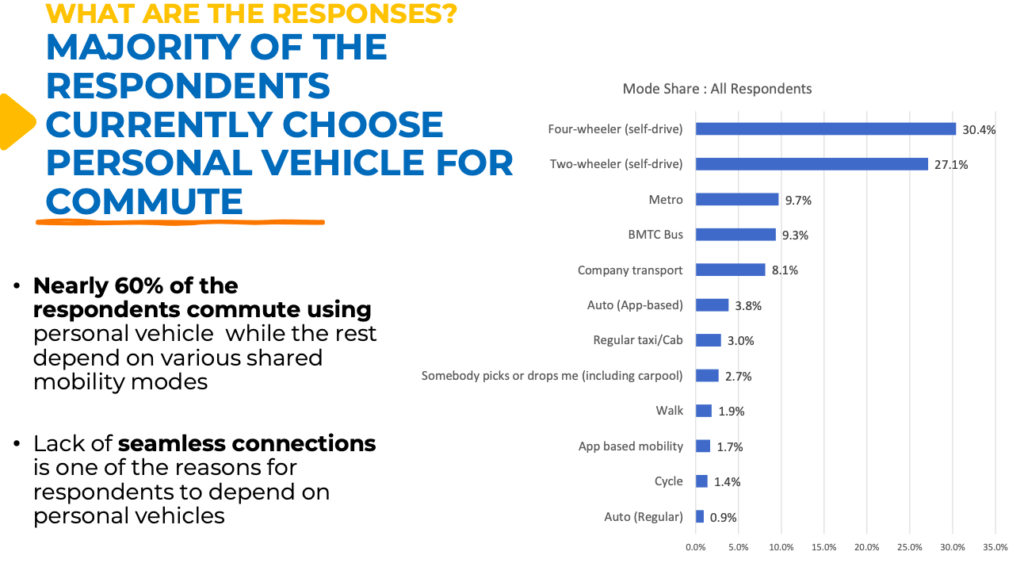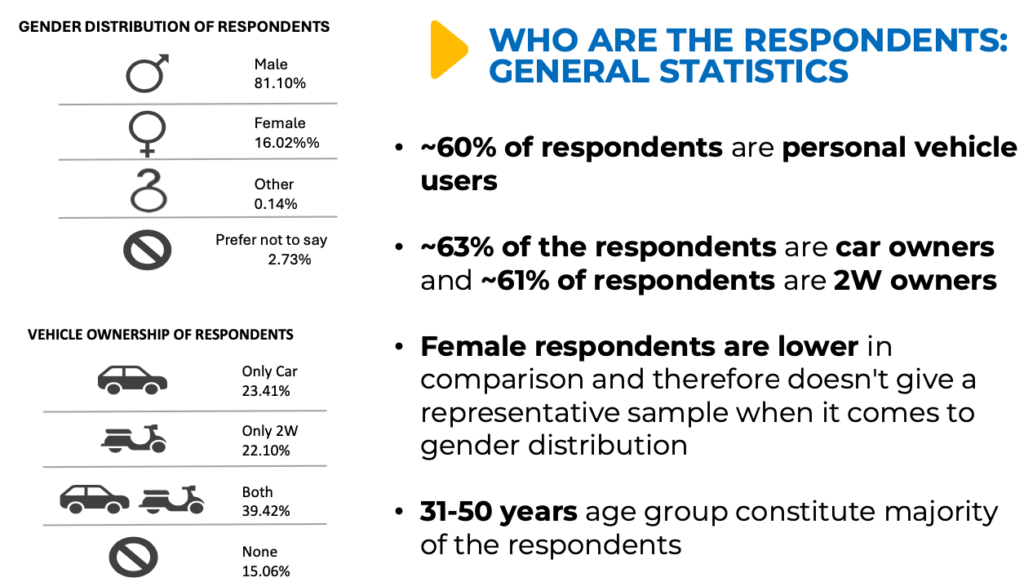- Overwhelming response to a first-of-its-kind outreach initiative
- 95% of the 3,855 respondents of the #Personal2Public Bengaluru questionnaire are keen to shift to Metro
- Seamless integration and travel time were a priority over travel cost
A campaign towards sustainable commute
Namma Metro has been seeing a steady increase in its ridership, despite its myriad issues, such as few lines are operational, first and last mile connectivity.
With the much-awaited metro lines to Whitefield and Electronic City expected to be operational in September 2023 and January 2024, respectively, extending the Namma Metro network to ~93 kms, is an opportune moment to promote usage of public transport to decongest the city.
A first-of-its-kind outreach initiative, the #Personal2Public campaign was launched to capitalise on this opportunity. The aim of this campaign is to inspire commuters to use public transport at least twice a week. This citizen-led initiative is supported by the Bangalore Political Action Committee (B.PAC), WRI India, several corporate, civil society organisations, auto driver unions, and research organisations.

Read more: Hop on board with public transport
The responses
In July, a #Personal2Public campaign questionnaire was circulated, which looked at commuter travel patterns to identify gaps in accessing public transport. While the questionnaire was open to all, it specifically solicited participation from commuters and residents in the Whitefield, Mahadevapura, Electronic City, and the Outer Ring Road (ORR) areas. These regions house approximately 10 lakh employees and will be connected to the upcoming metro lines. Of the 3,855 respondents:
- Majority (~60%) use their personal vehicles for travel every day – 1,172 being car users and 1,046 use two-wheelers.
- Car users spend about 1-1.5 hours in one direction as compared to 45 mins to 1 hour spent by existing metro users, when travelling to the areas mentioned earlier.
- Car and two-wheeler users are ready to shift to the metro if it reduces their door-to-door travel time.
- Sixty-two percent of the respondents who currently use public transport also want better footpaths and 33% of them want increased bus frequency.
- Existing public transport users and non-users unequivocally stated that improved first and last mile connection, with seamless multi-modal integration, will encourage more people to use public transport.
- Nearly 50% of women respondents depend on various shared mobility, preferring regular public transport over private modes. Public transport is one of the most favoured modes of transport for women along with app-based auto and four-wheeler services. 40% women respondents highlighted key challenges such as the lack of reliable first and last mile services; and the need for seamless connectivity as well as a common ticketing service.
- Ninety-five percent of 3,855 respondents, who are currently using private vehicles to reach their offices, are willing to shift to the metro, reveals the #Personal2Public Bengaluru questionnaire.
Apart from the online questionnaire, the #Personal2Public team has been conducting seminars and awareness campaigns to encourage people to use public transport. The team also conducted a freeze mob at the Sarakki junction urging car users to shift to public transport.
The feedback from the commuters will be presented to representatives from the Bengaluru Metro Rail Corporation Limited (BMRCL), Bengaluru Metropolitan Transport Corporation (BMTC), Bruhat Bengaluru Mahanagara Palike (BBMP), Directorate of Urban Land Transport (DULT), and Bengaluru Traffic Police (BTP), which will help further dialogues on improving public transport in the city.

Read more: Explainer: Urban planning measures that can reduce traffic and ease commute
Revathy Ashok, Hon Managing Trustee & CEO, B.PAC said “This survey communicates the ground realities that citizens witness in their day-to-day life. Bengaluru commuter survey findings has yet again clearly established that citizens of Bengaluru are willing to shift away from private vehicles and travel in public transport to their workplaces provided there is seamless, predictable and comfortable access to first and last mile connectivity. We intend to convey these insights to the government so that they can take the necessary actions and meet the expectations of Bengalureans.”
Srinivas Alavilli, Fellow, WRI India said, “The only long-term solution to our traffic problem is public transport. 2023 is going to be a milestone year for Brand Bengaluru, as Metro connects Whitefield to the rest of the city. #Personal2Public is a citizen’s movement with active participation from corporates, auto unions and citizen groups. We are working together to improve first and last mile access by collaborating with government agencies. The responses have made it clear that Bengalureans will shift to public transport if we make their everyday travel reliable and seamless. As ORR has a maximum number of daily commuters, running faster feeder buses from purple line metro stations to tech parks on ORR will make a big difference. Our sincere appeal to commuters is to adopt public transport starting at least two days a week.”
For more information, reach out to personal2public@wri.org
(This article is based on a press release from #Personal2Public campaign team and has been published with edits)
It gave
me lot of helpful and useful imformation